Everyday Carry Essentials: Beginner’s EDC Guide (2023)
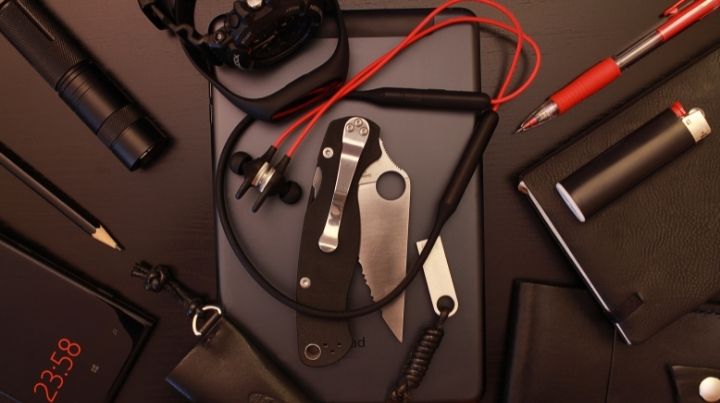

Podcast: Play in new window | Download
You never know when emergencies will happen that require you to be prepared with your everyday carry essentials.
Daily life can turn from happy and fun to disastrous and deadly in the blink of an eye. When that happens, all you will have to face a possibly fatal situation are your wits and the gear you have with you.
This guide will discuss the mindset behind your everyday carry essentials and provide a strategy for how you should consider adding to your everyday carry (EDC).
What Is Everyday Carry (EDC)?
Everyday carry, also known as EDC, refers to the items you carry daily. This can include everything from your wallet and keys to your phone and sunglasses and personal protection gear.
While the specific items that make up your EDC will vary depending on your lifestyle and needs, there are a few essentials that everyone should consider carrying, which I’ll cover later.
By carefully choosing the items that make up your EDC, you can be prepared for anything life throws your way.
Why Should You Practice an Everyday Carry Kit?
Most people don’t think about what they would do if suddenly faced with an emergency. However, those who take a moment to imagine being in a dangerous situation with no help in sight quickly realize how important it is to be prepared. That’s where everyday carry comes in.
Everyday carry, or EDC, refers to the items you always have on you, such as your wallet, keys, and phone. But EDC goes beyond just the basics. An EDC lifestyle means being prepared for any situation, whether it’s a natural disaster, a power outage, or an attack by a crazed lunatic.
By carrying everyday carry gear such as a flashlight, a pocket knife, or a multi-tool, you can be ready for just about anything. And even if you never find yourself in an emergency, there’s no harm in being prepared. After all, when it comes to preparedness, as the saying goes, it’s better to have it and not need it than to need it and not have it.
What is Gear?
Before diving into the specifics of EDC gear, we must be all operating off the same definition and understanding of gear. By understanding what gear is and how it’s categorized, you’ll be able to make a more effective decision regarding your everyday carry.
Merriam-Webster defines gear as, among other things, clothing, garments, goods, and equipment.
For our purposes, gear is anything we use to help succeed at the goals of preparedness, survival, less unwanted struggle, and living your best life.
Types of Gear
There are three types of gear within the seven levels of gear. Those types of gear are passive, active, and hybrid.
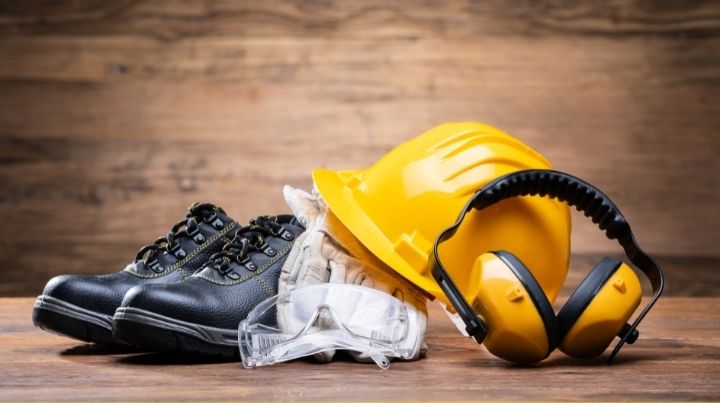
Passive Gear
Passive gear consists of things that operate without our direct, active input. For example, passive gear includes the clothes we wear that protect us from the environment. It also consists of the body armor we wear and the alarm systems we install to stop an opponent’s attack.
Active Gear
Active gear includes all the things we have to actively be involved with to operate. The flashlight and firearm you carry are active gear. So too is your GPS, hand-pump water filter, and anything else that requires your time, attention, and proficiency.
Hybrid Gear
Hybrid gear consists of everything that can be passive and which you can take over control of. For example, some drones can be pre-programmed to fly set routes. However, a drone pilot can take over control and fly the drone on his chosen spur-of-the-moment way.
What are the Seven Levels of Gear?
The first step in organizing your EDC gear is understanding the seven survival gear categories. The seven levels of survival gear mirror the Survival Pyramid and consist of:
- Immediate Survival Gear
- Imminent Survival Gear
- Emergent Survival Gear
- Urgent Survival Gear
- Semi-Urgent Survival Gear
- Delayed Survival Gear
- Long-Term Survival Gear
Triage Your Gear
I use the seven levels of survival gear because we cannot have everything available all the time.
Medics use triage to maximize the ability of a finite number of resources (people and supplies) to save as many people as possible.
The fact of preparedness, survival, and everyday carry, is that we are limited in what we can carry and have available to us in our hour of need. Therefore, we must triage our available space and resources to best match our survival needs.
In short, we only have so much space available for the gear we need to survive potential threats. As such, we must be smart with how we approach the logistics of prepping and surviving.
Level 1. Immediate Survival Gear
Immediate Survival Gear consists of the EDC essentials that you have to bring to bear against a threat within 1/3 of a second of becoming aware of the threat.
Due to the 1/3 of a second required response time, Level 1 everyday carry items are those self-defense items that are passively active, such as wearable protection gear such as abrasion-resistant protective clothing, body armor, and other forms of personal protective equipment.
Additionally, Immediate Survival Gear includes anything that you have “at the ready,” such as a firearm in your hands, which you can use within 1/3 of a second with proper training and capability.
Level 2. Imminent Survival Gear
Imminent survival gear is the gear you can put into action between 1/3 of a second and three seconds of becoming aware of a threat.
Your imminent survival items include your appendix carry pistol or the pepper spray on your hip, the fixed blade knife or spare magazine on your belt, and other self-defense items you have exposed or in quick-to-access areas like the top of open pockets, under an untucked shirt, etc.
For example, if the best defensive item option you have while in the office is a tactical pen, your tactical pen should be ready and accessible within 3 seconds.
The seat belt cutter with a glass breaker tip hanging from my truck’s shift lever is an imminent survival item when I’m driving my vehicle, should I find myself in a situation that requires me to break out of my truck through a window.
Imminent survival gear does not include the things buried at the bottom of your cargo pocket that take more than three seconds to get and put into effective action.
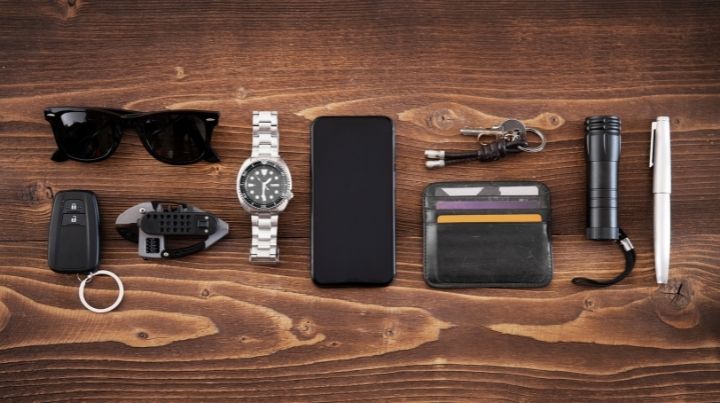 Level 3. Emergent Survival Gear
Level 3. Emergent Survival Gear
Emergent gear is the kit you have available for use within three minutes of becoming aware of the need to put the item or items into action.
These are the things that you have floating around at the bottom of a cargo pocket, are carrying in a backpack, have stuffed behind the driver’s seat, locked in the trunk of your car, or tossed in the bed of your truck.
Emergent survival gear includes the things you may need in an emergency that aren’t something that you’ll routinely need to respond to within seconds.
The tourniquet or pressure dressing in your aid kit can be emergent survival gear. After all, a tourniquet is used for emergency bleeding control to stop massive hemorrhages that can kill within a few short minutes.
Examples of emergent survival gear include your good multi-tool with the wire cutters you may need to cut through a bird’s nest of wires preventing your exit from an office on fire.
The cell phone you carry to call 911 can be emergent survival gear. And, for the people who have their mobile phone in their hands, always at the ready, the cell phone is NOT an immediate action item. So, act accordingly.
Level 4. Urgent Survival Gear
Urgent survival gear includes the equipment and supplies needed to ensure survival from three hours to three days. These items are easy to access, create and use.
For example, the survival pyramid dictates that we can find or create shelter within three hours to protect ourselves from the environment. Therefore, do you have a pocket emergency shelter with you or the knowledge and tools to build one?
Any of the tools you have to protect yourself from the environment within three hours will fall into this category.
Continuing with the theme of the survival pyramid are the basic tools you need to keep hydrated. Do you have a way to purify water, carry it, and ensure you keep it flowing? If so, gear will likely fall into the category of Urgent Survival Gear.
Level 5. Semi-Urgent Survival Gear (Individually Accessible, Creatable, and Usable)
Semi-urgent survival gear includes the equipment and supplies needed to ensure survival from three days to three weeks. Whereas urgent-survival gear must be easy to access, create, or use due to the time involved in ensuring survival, semi-urgent survival gear must simply be accessible, creatable, or usable.
For example, food does not necessarily need to be easily accessible. Instead, if you know where it is and can get to it, that’s good enough. And yes, while I believe everything should be easily accessible, as I discussed in triage, everything can’t be at the ready.
Level 6. Delayed Survival Gear (Individually Difficult to Access, Create, and Use)
Delayed survival gear includes the equipment and supplies needed to ensure survival from three weeks to three months. A person’s delayed survival gear does not need to be readily accessible or easy to put into action.
Instead, delayed survival gear may be difficult to access, create and use. After all, we all cannot be an expert or, for that matter, proficient with everything. Truth be told, we all will have things we struggle with regarding prepping and survival.
With that in mind, the best course of survival action is to pay primary focus on what you’ll need to survive the most impending threats, and those are the threats that occur earlier in the survival pyramid.
Some examples of delayed survival gear are the tools you’ll need to turn your survival shelter into a comfortable living space. Similarly, the tools you’ll need to grow or obtain food will fall into this category.
Level 7. Long-Term Survival Gear (Individually Nearly Impossible to Impossible to Access, Create, or Use)
Lastly is the gear that you’ll need over the long term. This is the long-term survival gear that applies to your survival needs that extend over 3-months and longer.
Using the survival pyramid, these are the tools that will help you build your version of society. And while these tools are far down the list of gear priorities, they are nevertheless considerations once your more immediate gear needs are met.
And, if you’re a crazy prepper like me that’s working to prepare for a long-term SHTF event, your level seven gear is something you will want to consider.
On that topic, here is an article I wrote on STHF gear that you may find helpful.
What Are Some Common Mistakes People Make With Their EDC Kits?
Over Packing
One mistake people often make with their EDC kits is packing too much. It’s important to remember that you’ll be carrying your kit with you everywhere, so you don’t want it to be too bulky or heavy.
Not Focusing on the Essentials
One mistake is including too many items. Your EDC kit should only contain the essential things that you need daily. Including unnecessary items will only add bulk and weight, making it difficult to carry and access the items you actually need.
No Variety
Another mistake people make is not including enough variety in their kits. For example, they may pack tools but no first-aid supplies. Or they may pack food and no water. It’s essential to think about all the potential scenarios you could find yourself in and include items useful in those situations.
Not Inspecting Your Gear
People often make the mistake of not regularly checking and replenishing their EDC kits. Like any other emergency supplies, EDC items have a shelf life and can become outdated or damaged over time. By regularly inspecting your kit and replacing expired or damaged items, you can be sure that it will be there for you when you need it most.
Not Searching for Value
People sometimes overlook the importance of quality, opting instead for cheap gear that is likely to break or fail when you need it most. Other times, cheap might be your best option. And, it’s essential, whatever your option, to find the best value for your dollar that you can.
Planning Only for Survival Emergencies
Some people make the mistake of thinking that an EDC kit is only for big emergencies.
Carrying a small first aid kit with some band-aids, over-the-counter medications, or other not necessarily survival emergency level gear can be extremely helpful at times.
What is the Everyday Carry Mindset?
Now that I’ve covered the levels of survival gear along with some every day carry pitfalls, it’s time to discuss the EDC mindset.
On Your Person
When I consider my everyday carry setup, I initially focus on the first two levels, levels one and two of survival gear. I begin by considering what I need to protect myself at the moment of impact should I not be aware of an impending threat. That’s level 1.
I then look to what I can carry that will be a force multiplier for me in responding to any immediate threats that I survive. Remember, level two is limited to everything you can effectively put into action within three seconds.
Level 1 & 2 (Primary EDC Gear)
Typically, when people do “EDC pocket dumps” and layout their EDC carry, the primary focus is, as it should be, on Level 1 and 2 EDC Gear, which collectively are categorized as your “Primary EDC Gear.”
Any item that a person plans to put into action within three seconds of gaining awareness of a threat is a primary EDC item for that person. However, if I bury my tactical bottle opener at the bottom of my EDC bag, can I really put that bottle opener into action within three seconds?
No, I can’t, so it’s not the item that makes something a primary item. It’s the ability to access the item and put it into action within three seconds. Notice I didn’t say effective action.
Being able to use something effectively is, at its core, based on your capability. And capability is defined as your Mindset + Ability (with ability being the combination of skill and knowledge) * Luck (good or bad).
So, the goal of Primary EDC Gear is for those items to be accessible within three seconds.
I consider things that I can carry on my belt, clipped at the top of my pocket, or on my body like a watch as primary EDC items.
Examples of Primary EDC Gear:
Note, these are not ranked by importance, but rather a list of items that, due to their accessibility, can qualify as a primary EDC item (Usable within 3-Seconds).
- Small flashlight
- Knife
- Pistol
- Watch
- Pepper Spray
Also, it’s worth mentioning things that are carried on your belt and which require more than three seconds to implement are not Primary EDC Gear. The requirement is to put it into action within three seconds. Therefore, while your ‘tacticool’ paracord bracelet is on your wrist, it’s not a primary EDC item as it takes FOREVER to unravel.
And, whatever we as individuals consider best to carry for our immediate action items, ARE our individual Primary EDC Items.
So, if you live in an area where local laws won’t allow you to carry the more effective types of self-defense weapons and you feel that you’re Dead Eye Dick with a tomato, and you carry one on your belt, then that’s your EDC setup.
Level 3 & 4 (Secondary EDC Gear)
Secondary EDC gear includes everything you need to satisfy your level three and four survival needs. These needs encompass everything from three seconds to three hours in the Survival Pyramid.
Level 3
When considering my secondary EDC gear needs, I first look at level three survival needs, including everything you need to survive from three seconds to three minutes.
This is when I consider adding my tourniquet. A tourniquet is meant to stop life-threatening bleeding that, if severe enough, can kill a person within a few minutes.
If you’re carrying a firearm as part of your everyday carry setup, you need to carry a tourniquet from a reputable manufacturer.
By carrying a self-defense firearm, you acknowledge that people may get potentially life-ending holes put into them, including you, so carry a tourniquet.
Level 4
Concerning level four, this is everything you need to survive three minutes to three hours.
Perhaps you’re trained in CPR and want to carry a pocket mask on you. That applies here because a person will die within fifteen minutes without oxygen to the brain.
Likewise, this is where the ability to protect yourself from the environment comes into play. Therefore, this is where you will give consideration to carrying a method (or two) of fire starting. Also, depending on what I’m doing, I might consider sticking a small emergency shelter in my cargo pocket – for example, if I’m hiking.
By doing so, I’m adding more options to survive a bad situation.
Level 5 – 6 – 7 (Tertiary EDC Gear)
Tertiary EDC gear consists of everything you need to satisfy your level five and beyond needs.
And yes, that includes food.
I’m not telling you not to carry a food bar in your pocket, and you should weigh it against your more pressing needs based on your situation. Again, this is about what you have physically on your person.
You only have so much room, and you can’t carry everything plus the kitchen sink.
Within Your Sphere of Control
Once I’ve figured out what I’m carrying physically on me during the day, I next consider what I have within my sphere of control.
I define “within my control” as something I might carry in a bag or backpack, have in my car, etc. I say control because if it’s not in my pocket or physically attached to me, then there’s no guarantee I’ll have it when needed.
This applies to backpacks and gear bags. While bug-out bags are great, we don’t live with them on our backs. And, even when out and about without our bag of holding, there’s the possibility something happens when we DON’T have our bag on our back.
You’ve just walked ten miles, your back is screaming, you drop your ruck to catch a breather, and BANG, the world lights up around you, and off you go without your bag.
Similarly, when you go into a convenience store, odds are you’re not dragging your duffle bag of gear from the back seat with you as you buy your Monster energy drink. Therefore, if something happens while you’re in the store, all you have is what’s on your person.
Likewise, you’re probably not humping your gear every day into the office.
In my case, if I’m running around town in a t-shirt, shorts, and flip-flops, I have, at a minimum, a small bag with a pair of shoes in it, plus whatever I feel I can stuff into the shoes. And, if I’m in my vehicle, I have shoes, clothes, and gear galore.
So, if I’m at the mall and something happens, yes, I may have to deal with the initial problem in shorts and flip-flops, and within a five-minute flip-flop job, I have enough gear to last me a week or more on my own.
Notice, I’m not counting the gear at my home. That’s because if I’m at home when stuff happens, that’s as good as it gets. All my stuff is there.
The Bottom Line About Everyday Carry
Everyday carry, or EDC, is what you have when you leave your home and are out and about. And, as it is all you’ll have with you when there’s an emergency, it deserves your time, attention, and deliberateness.
What does your everyday carry gear setup look like? Tell us your thoughts about EDC in the comments below.
Additional Resources:
- Need to add a tourniquet to your EDC kit? HERE is one we recommend!
- SHTF Plan: 5 Step Guide to Survive Any Disaster
- Best Tasers for Women
- Emergency Car Kits: What’s In YOUR Emergency Essentials Car Kit?
Stay safe,

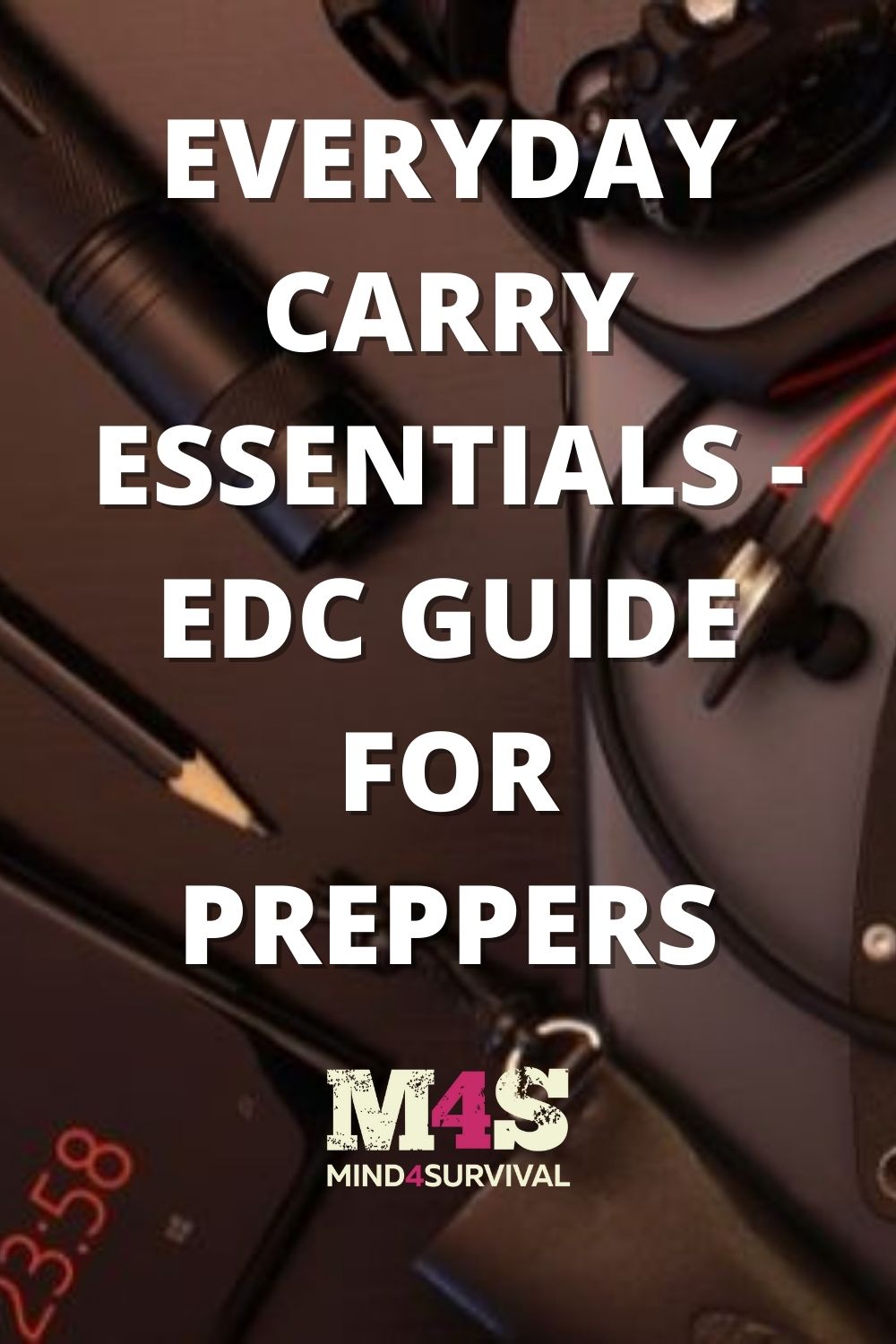
2 Comments
Leave a Comment




Join Mind4Survival!
Stay informed by joining the Mind4Survival! 100% Secure! 0% Spam!
Follow Us!
Affiliate Disclosure
Mind4Survival is a free, reader-supported information resource. If you make a purchase through our link, we may, at no cost to you, receive an affiliate commission.

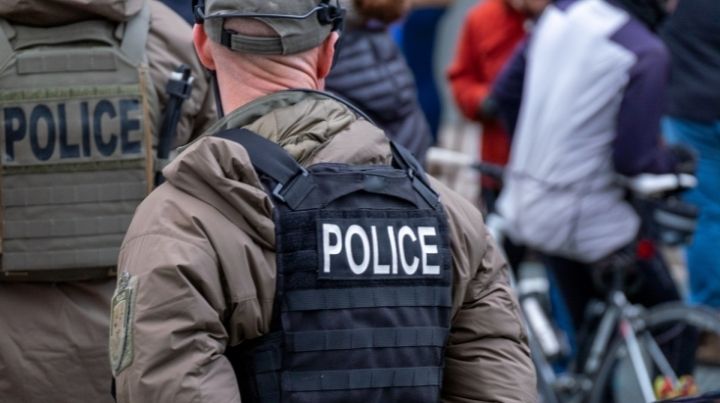
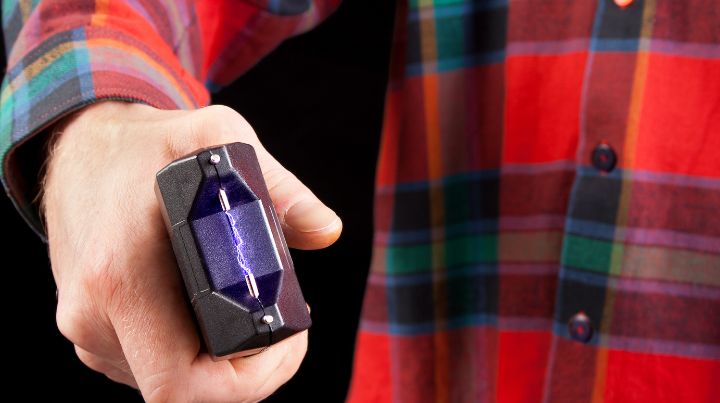
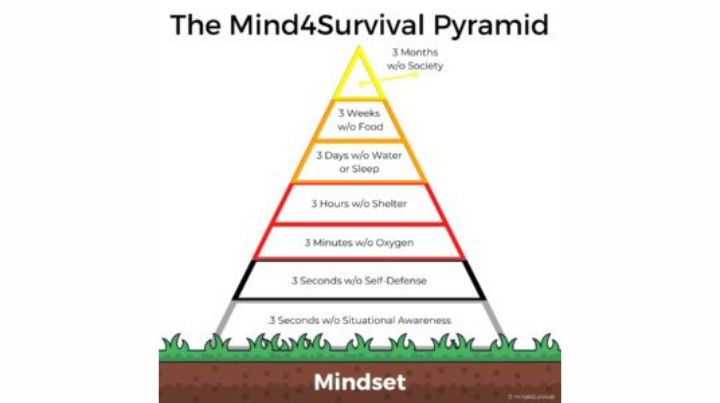
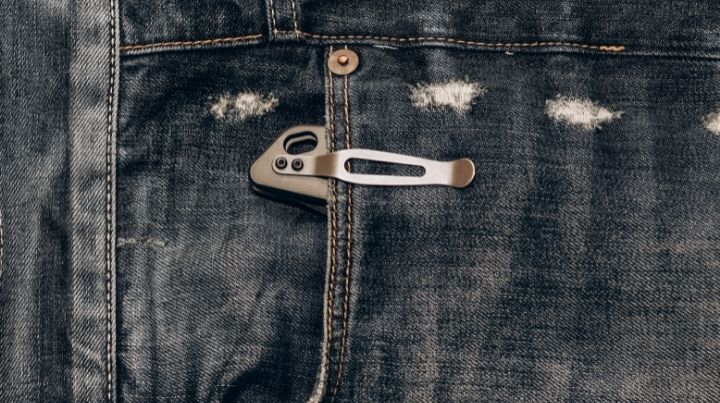


I admit my EDC sounds massive, but actually isn’t. I only wear Duluth firehose cargo pants, so there is always room. (own about a dozen of them) In one side pocket is a single lockpick and tension key, fire rod, 2 small hemostats, silk suture pack with needle, all in a small flat pouch, plus 10ft paracord that’s wrapped in a large folded handkerchief. In another pocket are electricians scissorsin a handmade sheath with mini reading glasses and small flashlight. Along with a 9mm sccy on the right belt, with two extra mags, a ruger .380 on the left (left hand backup, in case the right arm becomes useless) ending with a 6″ SRK knife attached to the right belt and the sheath tucked out of sight in the right rear pocket, and a CRKT “fossil” folder in the left rear pocket. Sounds like a lot, but I’ve worn this every day for years and barely notice. Of all of it, so far, the glasses, flashlight, scissors and knives get a lot of use.
A fantastic podcast, not your typical pocket dump. You also didn’t try to sell any one brand and encouraged people to create their own systems that fit their needs.
For me the 7 layers is a bit too much. I prefer the 1st, 2nd, 3rd line system; as for dangers I prefer to group it to just four: Seconds, Minutes, Hours, Days. Day is just really a repeat of the first three.
Thanks for the podcast.